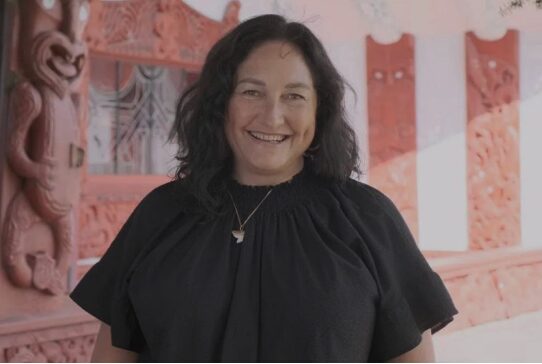Waipapa Taumata Rau, University of Auckland has launched a new initiative which aims to improve Māori and Pacific University Entrance pass rates and increase success at tertiary level.
The University has announced a new partnership with secondary schools.
Associate Director, Schools and Community Engagement, Liletina Vaka, says the University is excited by the goal of achieving University Entrance (UE) parity for Māori and Pacific learners by 2030.
“This would be a sector-leading approach, the first partnership of this kind domestically. What we learn across the next six years about improving rates for Māori and Pacific learners can, and should be, applied to all students,” she said.
“UE rates are declining across all student groups, although educational outcomes are worsening at a quicker rate for our Māori and Pacific learners.”
Māori and Pacific UE attainment dropped from 40% in 2020 to 34% in 2022, compared with national UE attainment of 53% in 2020 and 50% in 2022.
Twelve Tāmaki Makaurau Auckland schools formalised the partnership at a special ceremony on 11 April at the University. They signed a formal agreement to take action to help bring Māori and Pacific on par with non-Māori and non-Pacific students.

Pro Vice-Chancellor Māori, Associate Professor Te Kawehau Hoskins, says the partnership is important for Māori and Pacific students.
“Retaining our students at school to achieve UE is critical to holding open the possibility of tertiary education. Success in tertiary education is an important pathway for improving the life chances of Māori and Pacific students and their communities.
“We look forward to productive forms of collaboration with our kura in the preparation, participation and success of our tauira.
“Success in tertiary education is an important pathway for improving the life chances of Māori and Pacific students and their communities.”
Pro Vice-Chancellor Pacific Professor Jemaima Tiatia-Siau says the partnership will help address inequities within university. She says Pacific students are working hard to succeed but frequently deal with a multitude of barriers.
“Working closely with high schools ensures we can increase the number of young people eligible for university and help them attain success. This positively impacts this generation and future generations. Potentially this could be a game-changer for our communities,” says Professor Tiatia-Siau.
A lack of preparedness due to inequities for Māori and Pacific learners entering the tertiary environment has been identified as a major barrier, says Ms Vaka.
Although students make it to university, two main factors appear to stifle success, she said.
She says, noticeably, few credits have been attained through sitting external exams, depriving students of acquiring the skills and resilience to fully participate in higher learning. A lack of awareness around choosing the correct prerequisite courses has meant Māori and Pacific students faced limited options, to enter their chosen field of study, she adds.
“An increasing number of learners come to university underprepared and many don’t have the prerequisites to enter programmes such as Engineering and Medicine. The under preparedness we’re seeing across the tertiary sector is not due to lower capability, but poor pathways and many years of UE messaging based on minimum requirements.”
Taking a collaborative approach with secondary schools will address the needs of Māori and Pacific in laying the necessary groundwork for higher education, she said.
“Our community has a high degree of trust with institutions and, as long as everything appears to be going well, parents don’t feel the need to question how our national curriculum works,” says Ms Vaka.
Katalina Ma, Pathways Programme Manager, who manages the project, says ensuring Māori and Pacific secondary students arrive with a ‘fit for purpose’ University Entrance qualification has been the driving force,to build the partnership and devise the new initiative.
She says getting all parties on the same page included sharing data with schools that showed attaining NCEA external credits (credits gained by sitting an exam) gave students in the university environment an advantage.
“For the general population, if you come in with more than 20 external credits, then there’s a 95% chance of success in your first year of university across any programme.”
“Worryingly for our Pacific community, if your young person comes in having no external credits, there’s a 55% chance they’ll experience success in their first year. Our partnership with schools is about ensuring our learners, their families, and teachers are well informed and all on the same page.”
The initiative will roll out over the next six years.
“This UE partnership has real potential to impact our education sector, as well as our labour market, city, and society more broadly,” said Ms Vaka.



